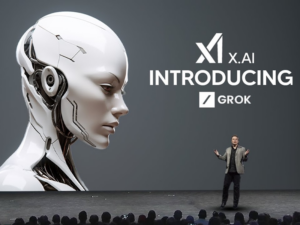TL;DR:
- The EuroStack initiative aims to create a European alternative to hyperscale cloud providers.
- The initiative seeks to develop an integrated digital ecosystem, including software, services, hardware, and solutions.
- Key players, such as Francesco Bonfiglio, CEO of Dynamo, and Solange Viegas Dos Reis, Chief Legal Officer at OVHCloud, are driving the initiative forward.
The European cloud computing landscape is on the cusp of a significant transformation with the introduction of the EuroStack initiative. This collaborative effort aims to create a European alternative to the dominant hyperscale cloud providers, such as Amazon Web Services (AWS), Microsoft, and Google. The initiative seeks to develop an integrated digital ecosystem, including software, services, hardware, and solutions, to promote digital sovereignty and reduce dependence on non-EU providers.
According to Francesco Bonfiglio, CEO of Dynamo, a cloud exchange platform, EuroStack is about “teaming up to create a European tech ecosystem alternative, including cloud.”
“We need to make that simple,” Bonfiglio says. “We need transparency, controllability, and interoperability. And if you want to lock me in, I won’t let you in.”
This sentiment is echoed by Solange Viegas Dos Reis, Chief Legal Officer at OVHcloud, who emphasizes the importance of developing a European cloud ecosystem that prioritizes data sovereignty and security.
More than 100 organizations on board
The EuroStack initiative has garnered significant attention, with over 100 organizations already on board. The initiative’s goals are ambitious, aiming to boost security, redundancy, and resilience, as well as promote opportunities, sovereignty, and governance through direct industry action. To achieve these goals, EuroStack will focus on five key policy pillars:
- Recognize and define a European digital industrial policy (EDIP) across European Commission functions.
- Build strategic digital infrastructures, first by aggregating “best of breed” existing assets and supporting them with integration platforms, then by increasing industry collaboration.
- Support this aggregation with public and private investments, including in costly parts of the value chain.
- Select aligned interventions and measure results in terms of business outcomes that drive economic autonomy.
- Seek cooperation with third-party states that share common goals.
As the EuroStack initiative gains momentum, it is likely to have significant implications for the European cloud computing market. With the rise of hyperscale providers, European companies have struggled to compete, and the market has become increasingly asymmetric. However, with the introduction of EuroStack, European companies may finally have a chance to level the playing field.
Conclusion
In conclusion, the EuroStack initiative represents a significant step forward for European cloud computing. By promoting digital sovereignty, reducing dependence on non-EU providers, and developing an integrated digital ecosystem, EuroStack has the potential to transform the European cloud computing landscape. As the initiative continues to gain momentum, it will be interesting to see how it shapes the future of cloud computing in Europe.
References
[^1]: Fleur Doidge (2025). “Introducing the EuroStack initiative: Could this turn the tide on hyperscale cloud in Europe?“. Computer Weekly. Retrieved 2025-04-15.
[^2]: Bertelsmann Stiftung (2025). “EuroStack – A European Alternative for Digital Sovereignty“. Bertelsmann Stiftung. Retrieved 2025-04-15.



